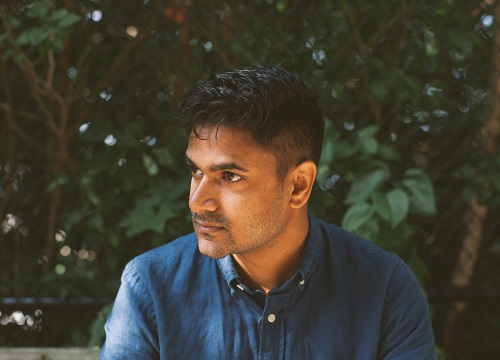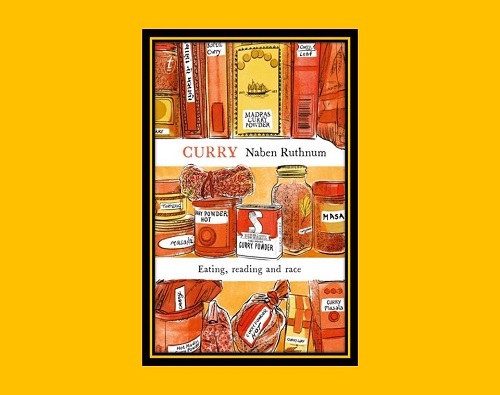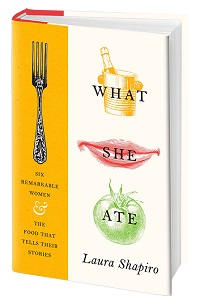A “curried” lens to look at South Asian diasporic writing and representation of food.
Naben Ruthnum’s book Curry, Eating, Reading and Race begins with his visit to Mauritius as a child, meeting his ailing grandmother and extended family, and curry. “This is how books like these are supposed to start, isn’t it?,” questions Ruthnum referring to the range of South Asian diasporic writing where elements of nostalgia, a search for authenticity, and attempts at resurrecting broken bonds across continents is attempted with curry- a dish that doesn’t quite exist, but in many ways seems to define who we are. Curry: Eating, Reading and Race examines this genre and our expectations from it to show us that what we crave, may not entirely exist.
“Curry isn’t real,” writes Ruthnum, yet the metaphorical power this phrase has on narrating South Asian diasporic experiences cannot be overlooked. But with changing times, and global palettes, Ruthnum points out that it might be time to change the narrative and to change what is expected from writers themselves. It’s not that he dismisses this genre entirely. Throughout the book, you will find references to notable works and their influence in making the genre more inclusive of the diverse experiences we all encounter today.
As I was reading Curry, I kept looking at my kitchen shelves. I have lived in India most of my life, but my kitchen has equal measures of basil and rasam powder. My kitchen represents my south Indian upbringing, but a small portion of it also represents my varied tastes in food, my travels and my sojourn in the United States. I wondered if nostalgia and authenticity for me lay somewhere in between my jars of basil and rasam powder.

Image Credit: Ian Patterson
Naben Ruthnum is a Canadian author and winner of Journey Prize for short fiction. He has previously contributed to Globe and Mail, Hazlitt, and Walrus. His second book, a thriller named “Find You In The Dark” was published under his pen name Nathan Ripley in March this year. Over Skype, I spoke to Naben about writing this book, representation of food as a cultural signifier and well, some curry. Here’s what he had to say.
TYT: Why did you feel the need to write Curry; Eating, Reading and Race?
NR: I was at a juncture in my career, which hadn’t really started yet, where I was feeling frustrated with what I felt was a pressure to write a certain kind of fiction. The type of book or story that the market demanded from me was not the kind of book I wanted to write. So I explored the general shape of what South Asian writing in the West looks like right now- what the genre sort of became. I wanted to explore how South Asian people in the West and elsewhere don’t necessarily have the same story to tell.
TYT: What are you referring to when you say “Curry books”?
NR: It was a cheeky term that I came up with as a teenager -a young man’s way of making fun of the books his parents enjoyed reading. Over a period of time, I began to see a shape to them, and I realized there are good and bad ones. For example, Monica Ali’s Brick Lane is a novel that I highly underrated before I reread it for this book. It is an example of a very good book that sort of inverts this genre. Another book I really enjoyed is Jhumpa Lahiri’s, The Namesake. In general what you will find is that the language of food is often used to express a generational disconnect, and the purity of mother’s or amma’s recipes are something that the younger people can never recapture. The descriptors that I am using fit a number very good novels as well as a lot of novels that I feel simply conform to the genre and have a place in the market. They may not be heartfelt expressions of the writer’s artistry.
@NabenRuthnum on writing his book Curry, on food, nostalgia and why @senatormayukh's writing is one of his favorites. Click To TweetTYT: One of the recurring themes in diasporic narrations is a quest for authenticity. Does this add pressure on the writer to steer the story a certain way, probably leaving out more important stories they would like to share otherwise?
NR: In many cases it does. For me, authenticity has to be very personal to the writer. There are no authentic overarching diasporic narratives. Its impossible for there to be one. Publishers may think there is one, and perhaps the readers do as well. As a result, there is a lot of false authenticity that diasporic writers feel pressured to create, which results in their actual experiences being left off the page. Our chance to look at what is authentically unique to the writer is often taken from us because there is no market categorization for an individual’s unique experiences.
TYT: But curry itself, as you write, is inauthentic, heavily influenced by the masses it catered to at different points in history. Does this make the metaphor sort of a double-edged sword?
NR: I don’t think it does. The authenticity of curry is upheld by this cultural narrative of being the real food of someone’s homeland. But when you actually poke it apart and look at the specific history of a dish, be it chicken tikka masala or a biryani, you realise they are much more unique than some sort of authentic standard for the homeland. Chicken tikka masala came together from Bangladeshi immigrants cooking it in the UK kitchens, and the relationship between India and the Mughal empire lead to the dish that we now know as biryani. These stories are historically accurate, but they just don’t fit our Western vision of what real Indian food is.
TYT: As a first generation, Mauritian-Canadian what are some of your dinner table memories?
NR: This is a very curry book thing to say, that food every day was the sort of link to a place I had never been to, and a culture that I wouldn’t be really curious about until much later in my life. At the same time, what I like about how my parents treated food was that it was a practical part of adulthood. When my mother taught me how to cook, it was so I could feed myself, not so I could preserve the traditions of our homeland. I did do that eventually because I was making these dishes, but the important thing was to be a grown-up.
TYT: You also write that you add this 21st-century twist to the recipes because you add Kale in your Chicken Curry, is that right?
NR: Oh yes, but I add it at the very end, I don’t cook it to death or anything.
TYT: Recently there was a lot written about cultural appropriation and who can basically cook what. Dakota Kim wrote and I quote “So it’s not that you can’t cook a food. In most cases, no one will (or even can) stop you from doing whatever you want to, especially if you have the money and power to do. But don’t pretend you invented it, Columbus. The “New World” was already here and doing just fine when you arrived.” This is from her essay -“We’re Having the Wrong Conversation About Food and Cultural Appropriation.” What are your thoughts about food and cultural appropriation?
NR: I am hard pressed to find a way where it is a bad idea to cook the food of someone else’s culture. If you are blindly profiteering of somebody else’s cultural food, that is something that needs to be interrogated. If you are a restauranteur with a kitchen full of people of a different race, cooking the food of their culture and you are the person getting credit, perhaps there is a problem there. As I talked about it in Curry, I really do feel that with most cuisines it is hard to entirely attach one dish to one place in the world and not its conversation with the world. I don’t understand the harm of me making a taco for example, or someone in the West making a chicken tikka masala. I do think it is an important discussion to have. A positive outcome about a conversation on cultural appropriation in food is that you end up looking into the history of the food you are making, and a little bit of the history and culture of the people associated. That’s good, to understand where recipes come from.
TYT: In the essay “The Madeleine Effect” Julian Baggini spends a day eating meals just like his childhood and sort of experimenting on culinary time travel. “Changing habits mean changing perceptions. Having discovered more interesting dishes, my bolognese is now a bland meat sauce, not a reassuring dose of comfort food,” he writes.
Do you think this element of nostalgia that is such a big part of food writing, especially diasporic food writing, does not address the changing tastes and preferences over time? Does it build this fantasy food world, that is never really here, and always somewhere out there?
NR: I love that question. I just want to answer – yes. I think the sort of unseen kingdom of the past, that you see in food writing is common. Even with great writers like MFK Fisher we see this – the meal that has been eaten once, and rendered in prose forever is more important than the sandwich she eats for lunch that day. There is a certain beauty in the memory of a meal being enhanced over time. It is how we think of ourselves in our pasts.
What we probably need to worry about is how this nostalgia affects our perception. The thing is, nostalgia always contains a strong element of falseness. If we allow that element of falseness to affect our perceptions and our decisions moving forward, then we are making a fatal mistake. But that does not mean we cannot remember a meal fondly.
TYT: Of the many books you mention, one is “Brown: What Being Brown in The World Today Means” by Kamal Al-Solaylee. You write this book “blends memoir with focussed reportage.” What kind of diasporic food writing would you like to see out there?
NR: Someone who’s name I drop a lot is Mayukh Sen’s. His career in food writing is something I think is so admirable. I don’t want to make him a poster boy for diasporic food writing, but he simply writes where his interest goes and often brings that back to a place of memory. He can write about Tammy Wynette’s Southern cookbook as elegantly as he writes about things that one would assume are connected to him, like turmeric milk. That piece in particular where he ties in a beverage available at Starbucks with memories of what his parents made and introduces Madhur Jaffrey- that sort of approach where he is reaching out as much as he is reaching in, is very admirable. I am a fan of his. Him winning the James Beard Award is such a great sign that publishers and magazines have faith in diasporic writers to write about anything that interests them. I think that’s important – to have these diverse voices out there.
TYT: One of the things you write is “I don’t want to self-define as part of a brown identity that is still shaped by outside perception, by the imagination that the majority impose upon us.” Considering how global our food habits have become, you could say that perceptions about South Asian food are often narrow, is that right?
NR: It is. The modern kitchen of a diasporic person will definitely be very mixed, and not a place where one type of food is made and consumed. That is good, but that does not show up on the page. You will see that in curry books the cuisine is actually so limited- what people often cook and eat. This is something that goes back to authenticity. I think what you cook and what you eat on a daily basis ends up being a part of the sum of your experiences. It might not be representative of the entire person. It forces us to get back to the individual when you are contemplating how one diasporic person eats, and that’s something we are often reluctant to do because it is easier to think in categories.
TYT: Your second book “Find you in the dark” is a thriller. Can we expect more food-focused books from you in the future?
NR: I think so. I am at a point now where people are paying attention to my writing, so I have to make sure that I am as productive as possible next couple of years. I have been writing a thriller, and I am also spreading into screenwriting as well. I have a vague idea of a food-travel book which I want to start working on in about two years. Something along the lines of Curry, with a similar sort of look at authenticity and individual diasporic stories of people, perhaps living in the American South. That’s what I am looking at for now.
This conversation has been edited for length.
You May Also Like:


